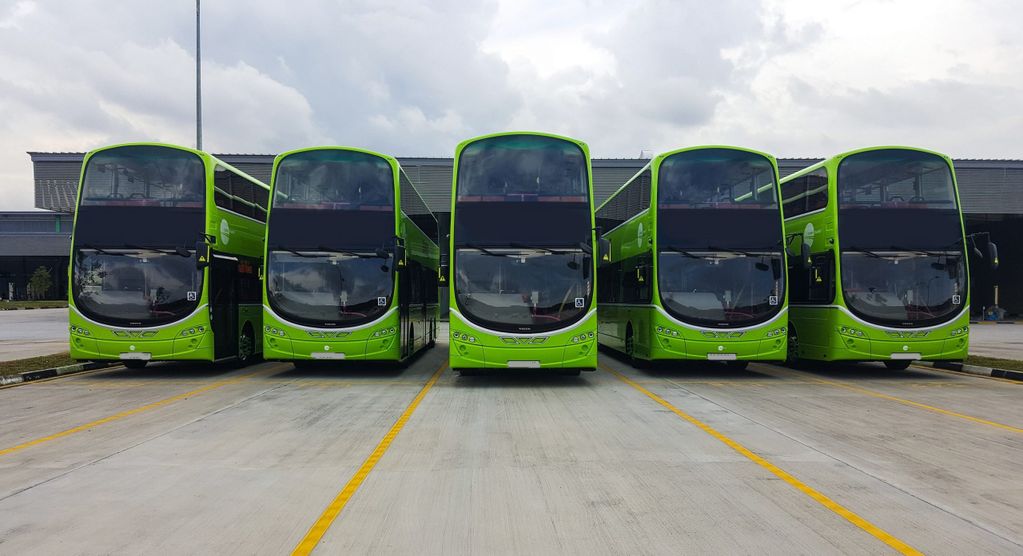
Why data is at the heart of revolutionising public transport
In many ways, public transport represents both the art and science of moving people. What drives these domains forward? Data does.
Data stands as an indispensable ally to our sector. Used intelligently, it pushes the boundaries of public transport: standardising services, streamlining operations, and enhancing safety. More broadly, data aids in redefining what ‘Public Transport’ itself means. It’s not merely about mass movement from point A to point B; our sector has evolved to focus on the complete door-to-door experience.
Continue reading to discover how data sits at the heart of revolutionising public transport.
… the path to seamless mobility
To many, “standardisation” might seem like a term confined to the boardrooms of bureaucrats and engineers. Yet, its significance is unparalleled for public transport professionals and enthusiasts. Data is at the heart of achieving seamless mobility across cities. Properly applied, it has the power to transform movement across urban space, rendering transport systems more interconnected and accessible.
Consider the example of the IP4MaaS project led by UITP, which focused on enhancing Mobility-as-a-Service (MaaS) adoption through the analysis and evaluation of existing MaaS technologies. The feedback from this project highlighted a crucial insight: the quality of the mobility experience is intrinsically linked to the availability of effective digital applications, underlining the importance of data in crafting responsive, user-centered transport services.
IT systems for E-buses
Electric buses offer more than meets the eye. They are often bigger than the sum of their parts, offering advanced capabilities well beyond their components. These vehicles are not just powered by electricity; they can be equipped with smart systems that enhance every aspect of their operation and passenger experience.
Consider the eBRT2030 Project, with one of the project’s aims to ensure “Smart interoperable IoT monitoring platform for connectivity, fleet planning, and charging management.” But what does this mean for passengers? At its core, this initiative is about leveraging data to streamline operations – from optimising routes to ensuring buses are charged and ready when needed. This translates to more reliable service, shorter wait times, and ultimately, a smoother, more efficient journey for passengers.
Data is the cornerstone in this equation, powering smart systems to not only improve operational efficiency but also to elevate the passenger experience. Through the intelligent use of data, electric buses are setting new standards for public transport, promising a future where efficiency and passenger satisfaction go hand in hand.
Ensuring cyber security
This is the serious one. So let’s get down to a key fact we can sometimes understate: public transport mobilises billions of people weekly. This underscores a critical reality: the vast and complex networks involved are underpinned by data.
This makes cyber security crucial. The sector’s reliance on extensive datasets, from passenger to employee information, necessitates a commitment to protecting this data against cyber threats.
Cyber security is essential across all sectors, but its significance is magnified in public transport due to the sector’s role as vital infrastructure and its handling of sensitive data. The integration of robust cybersecurity measures is not just a technical challenge but a cornerstone of trust and reliability in public transport systems:
In the words of Paul Gwynn, UITP Cyber Security Committee Chair:
“Cyber security protects against more than just external attacks. The human factor is the biggest element of data breaches. The thing is, people make mistakes. 85% of all breaches have a human factor in them. They’re accidental. So really, a big part of what we’re dealing with is training, awareness, and testing.”
This insight highlights how critical data is to every aspect of cyber security in public transport. Acknowledging the human factor emphasises the need for a culture of awareness and literacy around data and cybersecurity. It’s about more than just technology; it’s about arming people with the knowledge to avert breaches. Data informs our preventative strategies, training, and responses, underpinning a secure, reliable public transport system built on data protection and passenger trust.
Passenger flow and demand management
Picture this: a crowded train. We hear you… It’s far from ideal.
Passenger flow and demand management matter for this very reason. It allows operators to organise, schedule and prepare for fluctuating numbers.
By leveraging predictive analytics and real-time data, public transport systems can smooth out passenger distribution and effectively manage demand.
A UITP report from 2022 highlighted how understanding passenger flow through technology and innovation leads to significant improvements. For example, applying big data management techniques to analyse historical trends and passenger behaviors enables the creation of predictive models. These models, when integrated with transport schedules, allow for precise forecasts of passenger arrivals and their subsequent journey patterns. Such advancements in passenger demand forecasting tools not only enhance decision-making but also optimise the use of infrastructure resources, leading to smoother, more efficient public transport experiences during peak times and special events.
Data’s role
Ticketing, as explored in the UITP and Smart Ticketing Alliance’s report on “Ticketing in Mobility as a Service (MaaS),” is fundamentally redefined in the context of MaaS. It is not just a means of access but a digital key to seamless urban mobility, evolving with data at its heart to unlock a spectrum of transport services. This evolution is evident in the shift towards Account-Based Ticketing (ABT) systems, where personal travel accounts and digital tokens ease the way we access, pay for, and transition between services.
The report emphasises ticketing’s vital role in ensuring a trust-based ecosystem for MaaS, highlighting the necessity for interoperable and flexible systems that can adapt to real-time data sharing and fare management. Such innovative approaches to ticketing pave the way for a more integrated, accessible, and user-centric urban transport network, underlining the transformative power of data in enhancing the mobility landscape.
… into data, digitalisation and public transport
Our sector continues to evolve, with digitalisation playing a pivotal role in this transformation. The upcoming IT-TRANS event in Karlsruhe, Germany, from May 14-16, offers an unparalleled platform to explore the latest innovations in public transport. From AI and cybersecurity to payment systems and data governance, IT-TRANS is the place to be for insights from the global public transport landscape.
As part of IT-TRANS, the UITP-coordinated DATA4PT project will hold its final event on May 15th. This event will showcase achievements in multi-modal open data sharing across EU member states, marking a key milestone for digital transformation in public transport.








